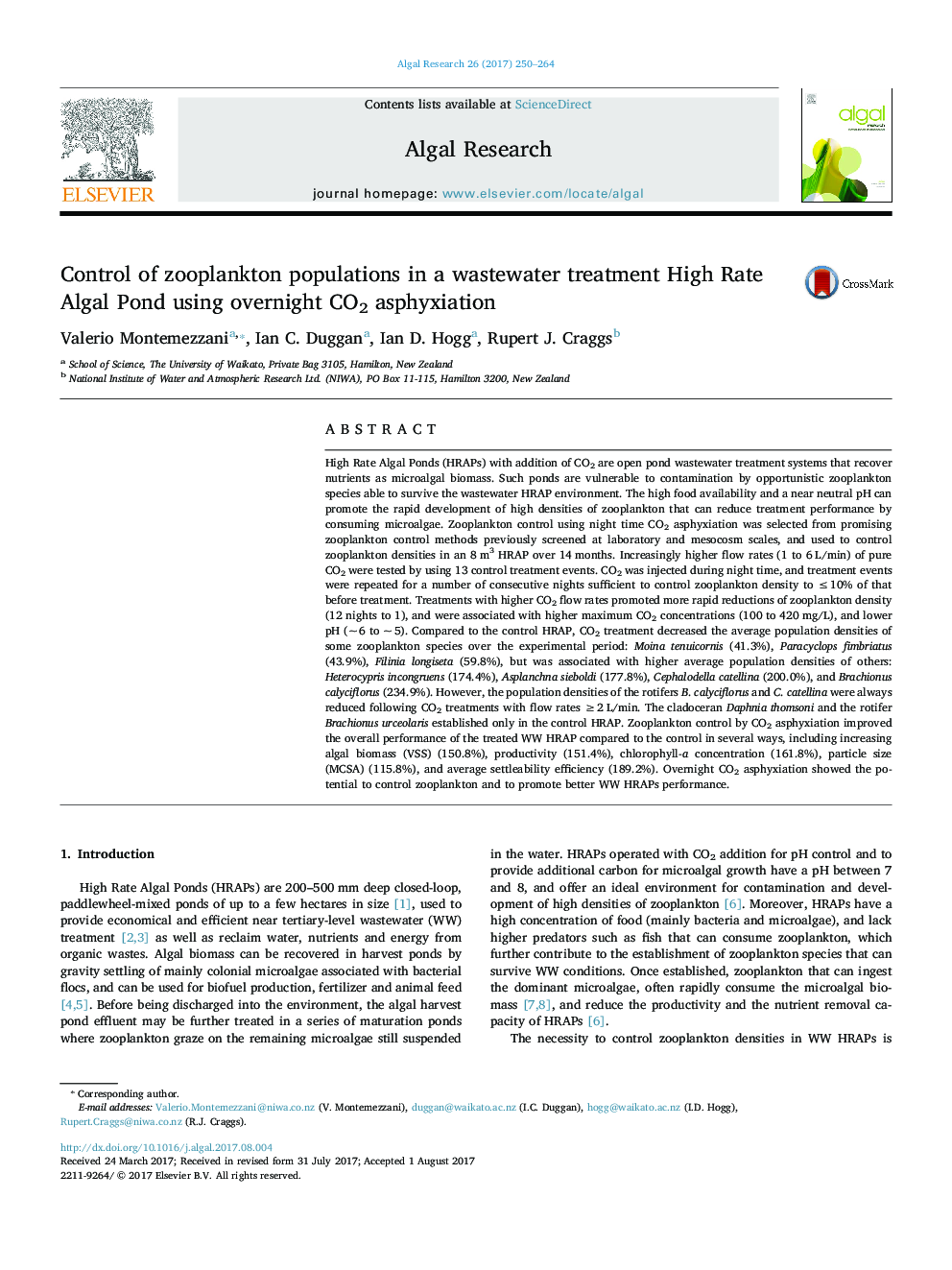| Article ID | Journal | Published Year | Pages | File Type |
|---|---|---|---|---|
| 5478280 | Algal Research | 2017 | 15 Pages |
Abstract
High Rate Algal Ponds (HRAPs) with addition of CO2 are open pond wastewater treatment systems that recover nutrients as microalgal biomass. Such ponds are vulnerable to contamination by opportunistic zooplankton species able to survive the wastewater HRAP environment. The high food availability and a near neutral pH can promote the rapid development of high densities of zooplankton that can reduce treatment performance by consuming microalgae. Zooplankton control using night time CO2 asphyxiation was selected from promising zooplankton control methods previously screened at laboratory and mesocosm scales, and used to control zooplankton densities in an 8 m3 HRAP over 14 months. Increasingly higher flow rates (1 to 6 L/min) of pure CO2 were tested by using 13 control treatment events. CO2 was injected during night time, and treatment events were repeated for a number of consecutive nights sufficient to control zooplankton density to â¤Â 10% of that before treatment. Treatments with higher CO2 flow rates promoted more rapid reductions of zooplankton density (12 nights to 1), and were associated with higher maximum CO2 concentrations (100 to 420 mg/L), and lower pH (~ 6 to ~ 5). Compared to the control HRAP, CO2 treatment decreased the average population densities of some zooplankton species over the experimental period: Moina tenuicornis (41.3%), Paracyclops fimbriatus (43.9%), Filinia longiseta (59.8%), but was associated with higher average population densities of others: Heterocypris incongruens (174.4%), Asplanchna sieboldi (177.8%), Cephalodella catellina (200.0%), and Brachionus calyciflorus (234.9%). However, the population densities of the rotifers B. calyciflorus and C. catellina were always reduced following CO2 treatments with flow rates â¥Â 2 L/min. The cladoceran Daphnia thomsoni and the rotifer Brachionus urceolaris established only in the control HRAP. Zooplankton control by CO2 asphyxiation improved the overall performance of the treated WW HRAP compared to the control in several ways, including increasing algal biomass (VSS) (150.8%), productivity (151.4%), chlorophyll-a concentration (161.8%), particle size (MCSA) (115.8%), and average settleability efficiency (189.2%). Overnight CO2 asphyxiation showed the potential to control zooplankton and to promote better WW HRAPs performance.
Related Topics
Physical Sciences and Engineering
Energy
Renewable Energy, Sustainability and the Environment
Authors
Valerio Montemezzani, Ian C. Duggan, Ian D. Hogg, Rupert J. Craggs,
